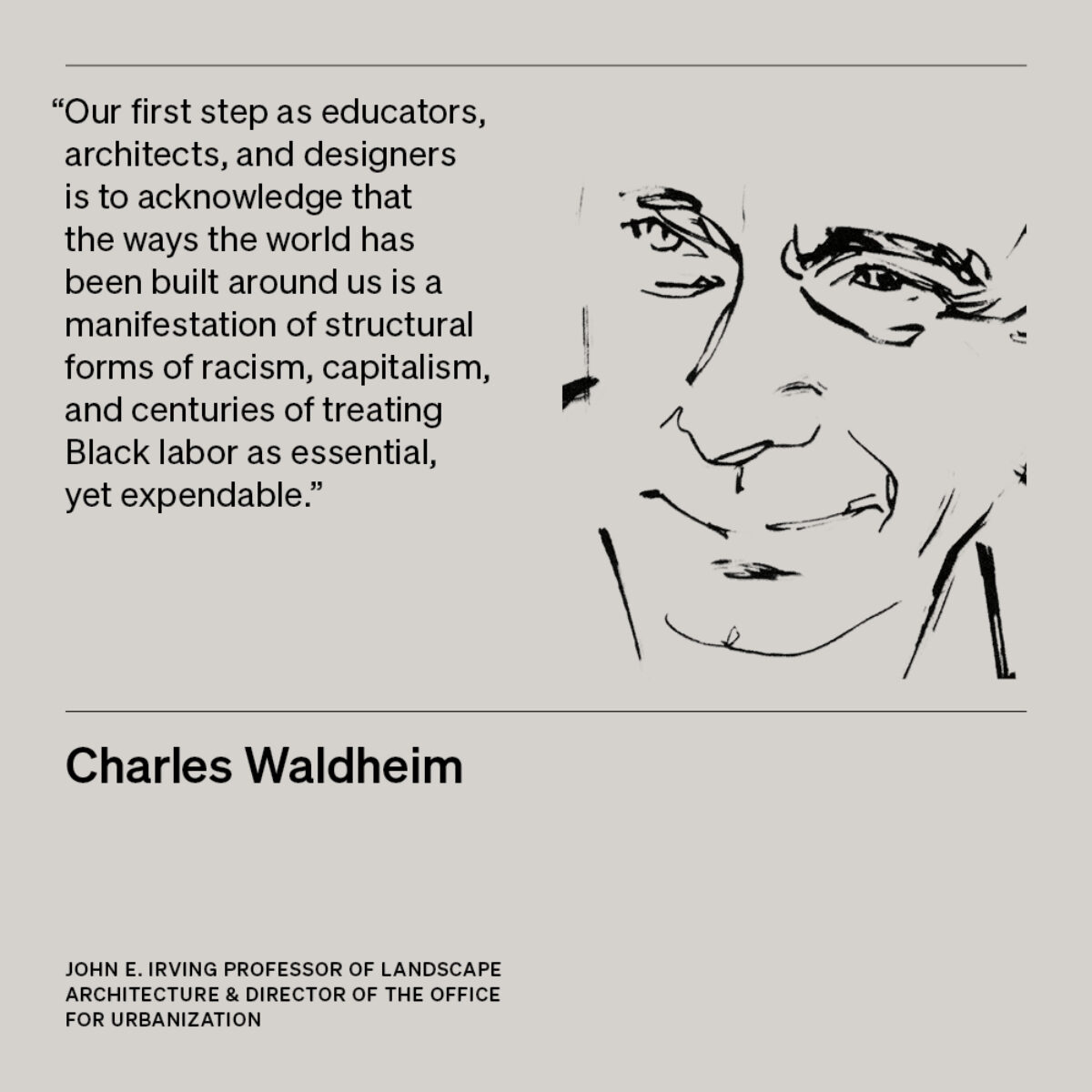Charles Waldheim, John E. Irving Professor of Landscape Architecture & Director of the Office for Urbanization
What role have the design disciplines historically played in the systemic violence against Black Americans?
Having grown up in the South, I’ve been sensitized to the effects of institutionalized racism my entire life. Of course, now we can see these effects across American culture. A racist society produces racist spaces. Our first step as educators, architects, and designers is to acknowledge that the ways the world has been built around us is a manifestation of structural forms of racism, capitalism, and centuries of treating Black labor as essential, yet expendable.
When design migrated to the US in 19th century, it was explicitly progressive, about suffrage, women’s right to vote, and immigrants, and their access to activities that the “academy” of architecture and art precluded. When the GSD was formed in 1937, the University leadership used a socioeconomic crisis to force structural changes to pedagogy in a discipline that was meant to be progressive. I think the big question for us as architects and designers is whether those instruments that we’ve inherited are still sharp enough to address the challenges we face? I think we are finding out the answer to that question in this moment.
From a landscape architecture perspective, how do you make sense of the current racial justice protest movement and power clashes on city streets?
In short, it’s the understanding that space (landscape, urbanism) is—and always has been—socially charged and political. Let’s look at a recent example: Trump holds a press conference at the White House Rose Garden. He moves across Lafayette Square, where protestors had been terrorized with tear gas and rubber bullets moments before, and arrives at a small white church to be photographed while holding a bible. All of these spaces have been designed to perform a certain rhetorical function. Landscape has to do with environment as perceived—a collective construct of people’s experiences—but its slipperiness as an agent of power makes it distinct.
What structural changes need to happen in the field of landscape architecture to make the discipline more accessible? How can landscape architects better align their work with principles of design justice? And what changes should be made at the pedagogical level?
The role of professional licensing in architecture and the requirement for higher education are classic signaling mechanisms and gates that hold back non-white, non-middle-class communities. The professionalizing, and licensing, of our field is a weak instrument, but its cultural capital can be considerable. Landscape architects ought to be more critical in terms of the work they take on. They must always ask themselves, Whom is this project serving?
In terms of education, the urgent work here to is build institutions that are as diverse as the people we represent. The GSD must produce architects and designers who strive for spatial justice. And students should ask how landscape architecture can be used as a tool in working for a more just future.
I believe that the Enlightenment and its goal of individual liberties secured through collective rights, for all its failings, remains an incomplete project. I believe that we are obligated to share the American experience of race with our students. The history of racial violence should be taught to all students as a fundamental part of political literacy and ethical authority for future architects and designers. “Climate by Design” is a new course offered by the Department of Landscape Architecture now open to students across the GSD. How about a similar course—“Race by Design”— to address issues of racism and anti-Black violence in America, both historic and contemporary, as enabled by the design disciplines? I would love to contribute to the construction of just such a course at the GSD today.
Charles Waldheim is an American-Canadian architect and urbanist. His research examines the relations between landscape, ecology, and contemporary urbanism. He is author, editor, or co-editor of numerous books on these subjects, and his writing has been published and translated internationally. Waldheim is the John E. Irving Professor of Landscape Architecture at the GSD, and he directs the school’s Office for Urbanization.
